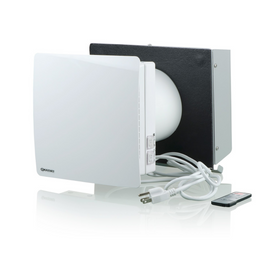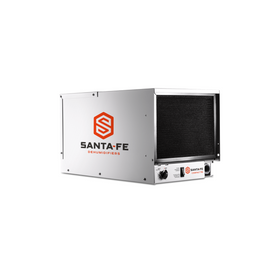
Net Positive Energy Home in Chicago
Last Updated: Mar 17, 2025When you think of living in Chicago, you might conjure up ideas of scandalously expensive heating bills that result from lake effect snow, whipping winds, and polar vortexes that push the temperature downwards towards Arctic levels. The thought of creating a net positive energy home that heats, cools, and powers itself without massive amounts of fossil fuel energy might seem like a feasible idea in New Mexico or Arizona. Still, the climate of Chicago (and especially those winters) might seem to require too much energy to stay warm.
A 2,900 square foot townhome located on North Leavitt Street in the Roscoe Village neighborhood of Chicago, however, is challenging many of the commonly held assumptions related to what is possible in terms of sustainable home construction in the Windy City.
Table of Contents
- The Goal: Net Positive Energy
- A Look at the Numbers
- Essential Home Features
- A Connection to Place

The Goal: Net Positive Energy
The owners of this home are no strangers to the world of sustainable building. A restaurant that they own and operate in Chicago was recently awarded as “The Greenest Restaurant in America” by the Green Restaurant Association, an honor that they repeated the following year as well. Wanting to translate the standards and savings associated with green construction to their personal lives, they partnered with Kipnis Architecture + Planning, Solar Service Inc., and Omega Structures Contracting Company to come up with a plan to build a regularly sized residential home that would produce more renewable energy than what the house would use.
This concept, known as net positive energy homes, is widely considered to be a major aspect of the transformation of our national energy grid and a fundamental element in the design and construction of sustainable homes. Because homes account for at least 31 percent of our national greenhouse gas emissions between the homes themselves and the production of electricity, having households produce their electricity through solar PV systems, wind turbines, and other hybrid residential renewable energy setups is a simple strategy to reduce our carbon emissions.
A Look at the Numbers
This 2,917 square foot Chicago Net Positive Home is equipped with a 6.2 kilowatt (kW) solar PV array. The house was designed so that a setup of 24 solar panels could be ideally oriented on the garage to produce the maximum amount of energy. According to the architectural firm responsible for designing the home, the expected energy output for the garage-mounted solar PV system is 7,840-kilowatt-hours (kWh) per year. In contrast, the house only uses 4,800 kWh of electricity. By only mounting the PV array on the garage, the rooftop area was freed up for a rear roof deck and another completely green roof with attached planters.
Dual electric vehicle (EV) carport chargers are included in the garage to take advantage of the excess energy produced for their personal transportation needs' partial annual charging requirements. This only further reduces the personal carbon footprint of the owners.
In terms of energy efficiency and thermal performance, this net positive energy home achieves an impressive HERS rating of 32 (on a scale of 1-100; lower is better) and an Energy Use Intensity (EUI) rating of 23. The home is almost built to the lofty standards of Passive Haus construction, with an extremely tight building envelope. The mechanical HVAC system has an ultra-high efficiency, achieved through incorporating multi-zoned, two-stage, forced air systems that are remotely controlled via an app that connects to the home’s smart home system. The high-efficiency insulation also increases the home's thermal performance, with R-10 rigid insulation on the basement slab, 5 ½ inch cellulose insulation in the interior wall cavities, and an additional rigid extruded polystyrene(XPS) insulation on the exterior walls.
The home is so energy efficient that the solar array can even power a hot tub on the roof deck!

Essential Home Features
While the solar PV system, the energy-efficient design, and the impressive net-positive energy status of this home are certainly the focal point for the attention it has garnered, the home also includes several other impressive and sustainable features.

The home integrates LED lighting throughout every room, though the artificial lighting requirements are minimized through a design strategy that maximizes natural light. Despite the home's unideal east/west orientation, which tends to cause problems with passive solar heat gain, the designers and builders were able to maximize natural daylighting through the thoughtful placement of argon-filled Energy Star rated windows and a central skylight. The selection of the windows was primarily based on the specific solar heat gain coefficients and solar shading coefficients to help limit excessive heat gain that is common to homes with this glazing orientation.

To reduce the cooling load that would be needed in the summertime due to the large amount of natural light and heat that floods into the home, a natural ventilation system was integrated through venting hot air out of the third-floor windows in the penthouse while drawing in cooler air from windows in the basement and the first floor. An air-to-air heat exchanger also allows for fresh air intake.
This net-positive energy home also has permeable paving throughout the yard. While yard and garden space in downtown Chicago is a rarity, the homeowners deliberately designed a slightly smaller home to free up a bit of green space around their home. They planted most of their landscape with vegetation with low water requirements, virtually eliminating extra irrigation. The planters on the green roof allow for further foliage and add a biophilic dimension to the home.
Other sustainable features include:
- Water Sense™ plumbing fixtures
- Cement fiberboard rain screen siding system
- Energy Star appliances
- Outside combustion air for the gas fireplace
- Low- and no-VOC paints and finishes

Elm trees in the general vicinity that had been damaged by disease and previously cut down were utilized for the fronts of the kitchen cabinetry. This not only is an excellent example of reutilizing wood that would have otherwise been wasted, but it also allowed the home to proudly display a unique kitchen centerpiece with organic lines running parallel throughout the cabinet panels.
Most of the wood flooring in the home and the basement cabinets were sourced from reclaimed white oak wood that came from trees downed in a severe storm that hit the western side of Chicago several years ago. Walls in the den area of the home are covered by beautiful barn wood that was sourced from an old dairy farm in nearby southern Wisconsin. Another flooring throughout the home incorporates ceramic and porcelain tiles with large amounts of recycled content and simple, stained concrete floors.
Even in an urban and metropolitan area with extreme winter temperatures, this beautiful, net positive energy home is a testament to what sustainable design and construction can achieve.
Tobias Roberts
Tobias runs an agroecology farm and a natural building collective in the mountains of El Salvador. He specializes in earthen construction methods and uses permaculture design methods to integrate structures into the sustainability of the landscape.











